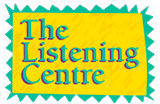Neuroplasticity
How is it possible to help brain conditions with sound?
By: Dr. Norman Doidge
The answer requires several steps.
Step one
It is now completely beyond dispute, based on laboratory and clinical evidence, that the human brain is neuroplastic, meaning that its circuits are dynamic, and changing in response to activity and mental experience. This discovery overturns years of belief that the brain’s circuitry is fixed or “hardwired” by the end of infancy and early childhood.
Step two
It was long ago established that brain neurons communicate in several ways. Chemical signaling by neurotransmitters is one of the brain’s many “languages,” and often works very locally, at microscopic levels. Another “language” is that of electrical signaling. Our neurons produce patterns of electrical energy to communicate more globally, across vast expanses of the brain. These electrical patterns constitute the brain’s lingua franca, or common language
Step three
Our sense receptors (such as the retina in the eye, the cochlea in the ear, or heat receptors in the skin) are “transducers”—an engineering term meaning that they convert one form of energy, and the patterns of information in that energy, into another form of energy patterns. For this reason, it is possible to deliver certain frequencies of sound energy to the cochlea (the ear’s sound receptor) and the vestibular apparatus (the balance system), which convert it to electrical patterns of energy in the brain. Change the frequencies of sound played into the ear and, over time, we can change the structure and function of the brain’s circuits. For instance, whenever we hear loud music, with a heavy bass beat, our neurons start firing at the same tempo as the music. This process, called “entrainment,” is only one of the ways music can modify the brain’s structure. This has all been demonstrated using various hi-tech methods of scanning the brain, such as those developed by researcher Nina Krauss, at Northwestern University.
So, in summary, sound energy can be passed non-invasively into the ear, where it is converted to electrical patterns, that can change the structure of the plastic brain—provided one understands all the fine details of how to do this.
Excerpt from the Foreword in Paul Madaule’s e-book “When Listening Comes Alive” by Dr. Norman Doidge, author of “The Brains Way of Healing” and “The Brain That Changes Itself “

Photograph from The Toronto Star January 23, 2015
 Skip Navigation
Skip Navigation